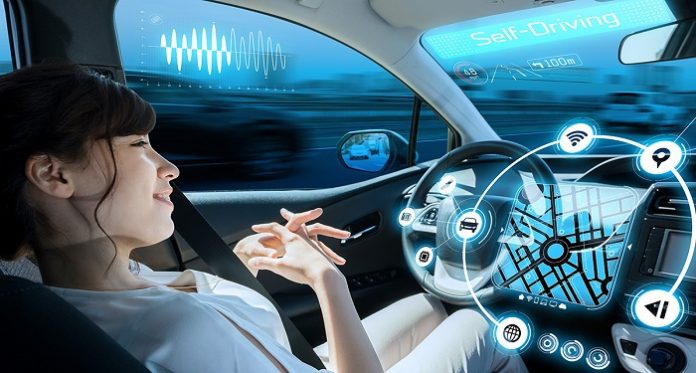Self-driving cars were just s sci-fi-like idea 10 years back, but today it is a reality. They have caused a commotion in the market, affecting a great number of industries with the revolutionary AV technology. It is said that with this technology driverless cars will save more than half million of lives between 2035 and 2045.
Still restricted in many parts of the world, driverless cars are being tested in California as the regulations allowing the testing of self-driving cars on the streets of California is contributing to the growth and development of companies and manufacturers such as Tesla and Alphabet.
In the meanwhile, Uber, a rideshare provider preparing to g public with the forthcoming IPO, is also working with AV.
Self-driving cars are said to be able to reduce the costs of public safety by 234 billion dollars in the course of a decade in the period of 2035 to 2045. Although these dates may appear too far to care for the outcome and too near to be able to see massive progress in the development of automated vehicles, self-driving cars are already changing numerous industries, starting with delivery and transportation.
Moreover, the Strategy Analytics research company reported that during the above-mentioned period, self-driving cars and AV technology will save an additional 250 million commuter hours on an annual basis.
As far as the influence on other industries concerned, automated vehicles will probably affect more than 30 different industries, which includes transport and delivery, auto industry, ridesharing companies, and taxi companies, and even travel and hotel industry as people may choose to spend the night in their AVs instead of renting a room.
While some industries may see benevolent effects from AV expansion and development, Forbes suggests that industries and sectors such as construction, mining and farming may be heavily affected by the adoption of AVs, as vehicles that are man operated within these industries, which could affect companies operating with construction equipment.
Which are the best self driving cars? Kroger driverless cars or Nvidia Autonomous driving? We will see in the future.
History of Self Driving Cars
The idea of self-driving vehicles dates back much further than Google’s research in the present day. In fact, the concept of an autonomous car dates back to Futurama, an exhibit at the 1939 New York World’s Fair. General Motors created the exhibit to display its vision of what the world would look like in 20 years, and this vision included an automated highway system that would guide self-driving cars. While a world filled with robotic vehicles isn’t yet a reality, cars today do contain many autonomous features, such as assisted parking and braking systems. Meanwhile, work on full-fledged autonomous vehicles continues, with the goal of making driving a car safer and simpler in the coming decades.
History of Autonomous Cars
In GM’s 1939 exhibit, Norman Bel Geddes created the first self-driving car, which was an electric vehicle guided by radio-controlled electromagnetic fields generated with magnetized metal spikes embedded in the roadway. By 1958, General Motors had made this concept a reality. The car’s front end was embedded with sensors called pick-up coils that could detect the current flowing through a wire embedded in the road. The current could be manipulated to tell the vehicle to move the steering wheel left or right.
In 1977, the Japanese improved upon this idea, using a camera system that relayed data to a computer to process images of the road. However, this vehicle could only travel at speeds below 20 mph. The improvement came from the Germans a decade later in the form of the VaMoRs, a vehicle outfitted with cameras that could drive itself safely at 56 mph. As technology improved, so did self-driving vehicles’ ability to detect and react to their environment.
History of Autonomous Vehicles
Autonomous Vehicle Technology
Autonomous Vehicle History
Google Isn’t the First to Dream of Robotic Cars
History of Self-Driving Cars
The Secret History of the Robot Car
The Evolution of the First Modern Self-Driving Cars
Self-Driving Cars Have Actually Been Around for a While
“Stanley” the Robot Car
Self-Driving Cars: Revolution or Evolution?
Autonomous Cars Today Driverless Cars Pros and Cons
At present, many vehicles on the road are considered to be semi-autonomous due to safety features like assisted parking and braking systems, and a few have the capability to drive, steer, brake, and park themselves. Autonomous vehicle technology relies on GPS capabilities as well as advanced sensing systems that can detect lane boundaries, signs and signals, and unexpected obstacles. While the technology isn’t yet perfect, it’s expected to become more widespread as it improves, with some predicting that up to half of the automobiles rolling off of assembly lines worldwide will be autonomous by 2025. Dozens of states already have legislation on the books concerning the use of autonomous vehicles in preparation for when this technology is commonplace.
Autonomous vehicles are expected to bring with them a few different benefits, but the most important one is likely to be improved safety on the roads. The number of accidents caused by impaired driving is likely to drop significantly, as cars can’t get drunk or high like human drivers can. Self-driving cars also don’t get drowsy, and they don’t have to worry about being distracted by text messages or by passengers in the vehicle. And a computer isn’t likely to get into an accident due to road rage. A 2015 National Highway Traffic Safety Administration report found that 94 percent of traffic accidents happen because of human error: By taking humans out of the equation, self-driving vehicles are expected to make the roads much safer for all.




